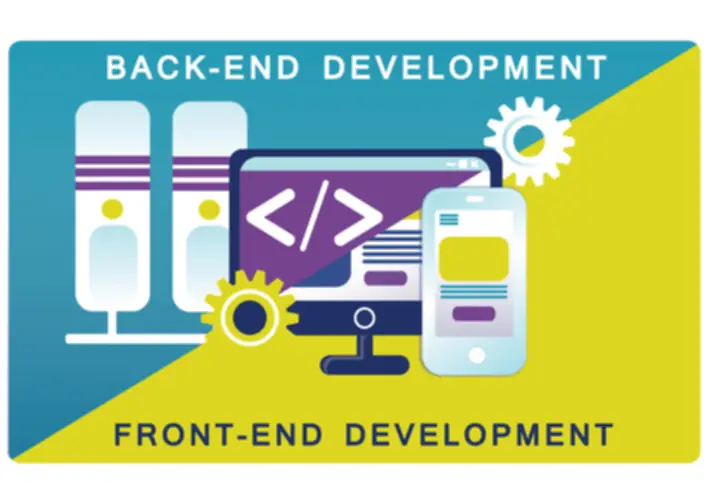By identifying and categorizing risks primarily based on their probability and potential influence, organizations can develop methods to mitigate or keep away from these dangers altogether. Additionally, often reviewing and updating danger management plans might help organizations keep ready for potential dangers and minimize web developer their impression on enterprise activities. In conclusion, risk impression and chance evaluation is a vital process for any group in search of to successfully handle dangers.
- This risk register template has every little thing you have to hold observe of the potential risks that may affect your project as well as their chance, impression, standing and more.
- “There have been a selection of them – export controls on gallium, germanium, antimony, the investigation of micron, tougher export controls on a variety of the similar important supplies,” Reinsch advised Newsweek.
- However, Risk Severity is solely one issue that must be thought of when prioritizing Risks.
With A Single Tool For Just $49 Per 30 Days In Your Complete Team
This involves figuring out both internal and exterior risks that may have an effect on business operations. Next, organizations have interaction in threat evaluation, evaluating the likelihood of those risks occurring and their potential impression. This assessment course of allows for effective risk prioritization, serving to teams focus on risk impact definition the most crucial threats first. Risk ranking is the process of classifying dangers into pre-determined criticality levels, corresponding to low, medium, excessive, relying on their likelihood and impression. It helps determine the dangers that pose a significant threat to enterprise operations and objectives and make informed decisions about the place to allocate assets and how to implement mitigation methods.

Threat Evaluation In Project Administration
Implementing best practices in business impression analysis assures organizations effectively establish and manage crucial risks. This process begins with danger evaluation, where the staff analyzes risks using a danger matrix. Each threat is assigned a threat rating primarily based on its likelihood and influence, allowing for efficient risk prioritization. Creating a danger evaluation framework involves a number of key steps that organizations must follow to successfully manage potential threats. Organizations then develop mitigation methods and continuously monitor their effectiveness.
What’s A Business Impression Evaluation And The Way Does It Work?
Organizations should allocate assets efficiently to manage these prioritized risks, preventing issues like scope creep. Project managers face a big selection of risks that can impression prices, schedules, and total performance. Cost threat and schedule danger are significantly important, as they instantly have an effect on project budgets and timelines. While historical information can present priceless insights into previous dangers, it may not at all times be an correct predictor of future occasions. This complete guide delves into the intricacies of risk score, providing a step-by-step approach to mastering this crucial idea.
By conducting thorough risk evaluations and risk analysis, organizations can pinpoint potential risks, similar to monetary loss and regulatory penalties. Effective threat administration involves identifying, evaluating, and mitigating potential threats that could hinder an organization’s objectives. This process is important for maintaining business continuity and reaching strategic objectives.
Additionally, understanding both aspects permits organizations to plot efficient mitigation strategies, making certain they allocate resources effectively. Ultimately, this course of facilitates a radical view of potential dangers, enabling organizations to prepare adequately and reduce adverse outcomes successfully. Once risks are plotted on the matrix, it turns into easier to prioritize risks, focusing on people who pose the best menace. This systematic methodology of threat administration guarantees that groups handle critical project dangers first, ultimately enhancing the project’s chance of success. The identification and administration of risks is a key idea of good well being and safety management.
Licy additionally has labored with Moet Hennessey to drive range and inclusion on Wall Street and corporate America. He has partnered with Vice President Al Gore, senior authorities officers, scientists, NGOs and activists, on global climate change influence and sustainability across Africa. And he was appointed by Republican and Democrat governors to supervise the conservation, preservation and administration of a outstanding U.S. nationwide historic landmark.
For further insights into the intricacies of this essential process, more detailed info awaits exploration.
When evaluating risk impacts, professionals often use instruments like danger matrices, qualitative analysis software program, and scenario planning frameworks. These instruments help determine potential dangers, prioritize them, and evaluate their effects on initiatives and operations successfully. To effectively perform a danger assessment, organizations must first pinpoint potential risks that could impact their goals.
By contrast, quantitative danger evaluation is a statistical evaluation of project dangers. While it takes longer than qualitative evaluation, quantitative danger evaluation tends to be more correct as it depends on knowledge. Common mistakes in risk influence assessments embody neglecting stakeholder enter, failing to update threat information, and underestimating potential impacts. These oversights can result in inadequate mitigation strategies, leaving organizations susceptible to unforeseen challenges. In the chance evaluation process, teams ought to contain stakeholders from numerous departments, together with management, finance, and operations.
This process begins with danger identification, the place potential project risks are acknowledged. In today’s complicated enterprise setting, implementing a sturdy threat management framework is essential for long-term success and sustainability. Understanding its significance is crucial, as efficient risk management can lead to improved decision-making and resource allocation. Criticality analysis is an important component of recent manufacturing facility administration, enabling manufacturers to focus their efforts the place they matter most. By systematically evaluating the importance of every asset, factories can scale back downtime, enhance safety, and optimize prices. When built-in with a CMMS, the method turns into much more highly effective, helping companies stay ahead in a aggressive panorama.
Paul has labored as a Senior Executive in the Certification house for 10 years and has over 39 years’ expertise in the Hospitality, Certification, Service, Retail agri-food and Technology sectors. Damaren is skilled in gross sales, marketing, certification, operations and software program applications and he possesses an MBA from McGill University. Sadly, when you take the time to analysis the explanations behind most airline accidents (55%) are categorised to be “Human Error”. If we design techniques which might be counting on the Operational Actor (Human Component) to be “Perfect”, this is actually a flawed system. Enterprises and traders can classify these risks into ‘Low’, ‘Medium’ or ‘High’, as per the diagram below. A very likely and extreme threat would be categorized as ‘High’, whereas a very unlikely and never extreme risk can be classified as ‘Low’.
By determining the chance of an adverse event and its danger impression, organizations can prioritize which risks require quick attention. Quantitative methods usually assist on this evaluation, providing measurable knowledge that helps key stakeholders make informed decisions. Risk impression refers to the potential penalties or effects that may end result from the incidence of a selected threat event.
To effectively put the risk administration plan into motion, organizations should allocate sources, assign clear duties, and continuously monitor progress. Once dangers are recognized, analyzing a threat matrix template helps prioritize them based on their overall danger score. This process allows teams to focus on high-priority dangers that might markedly affect project outcomes. By reviewing controls, organizations can decide whether their danger management strategies meet their risk urge for food and contractual obligations. This evaluation involves analyzing the probability and influence of assorted risks, making certain that any remaining residual threat is known.

Transform Your Business With AI Software Development Solutions https://www.globalcloudteam.com/ — be successful, be the first!